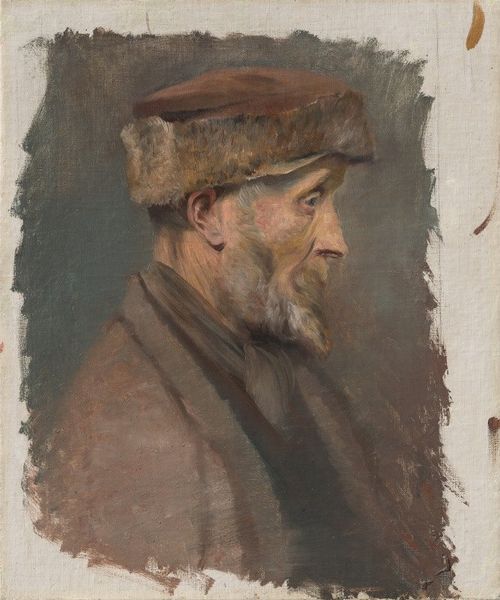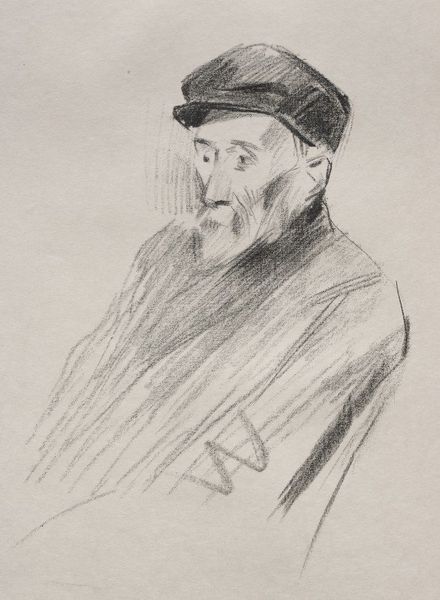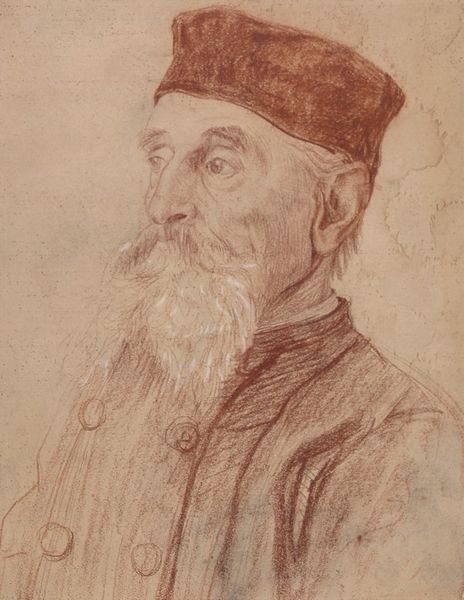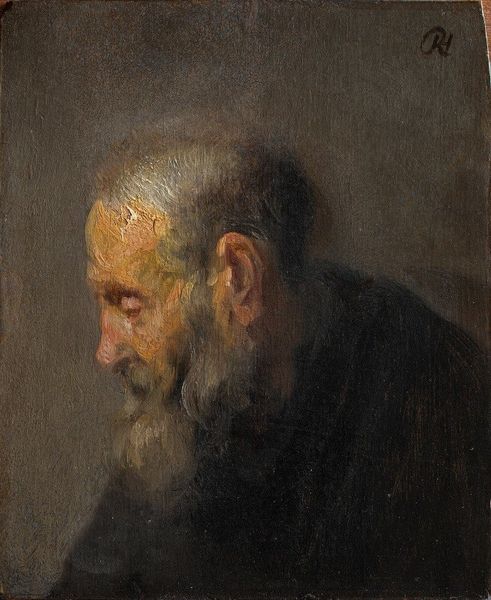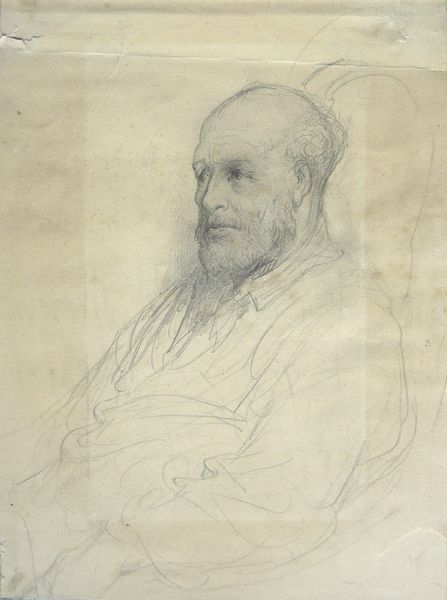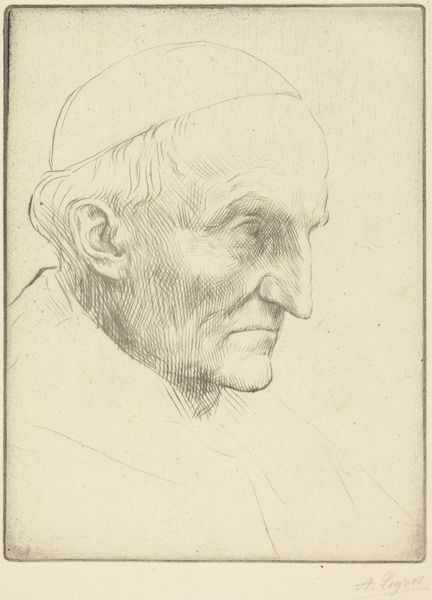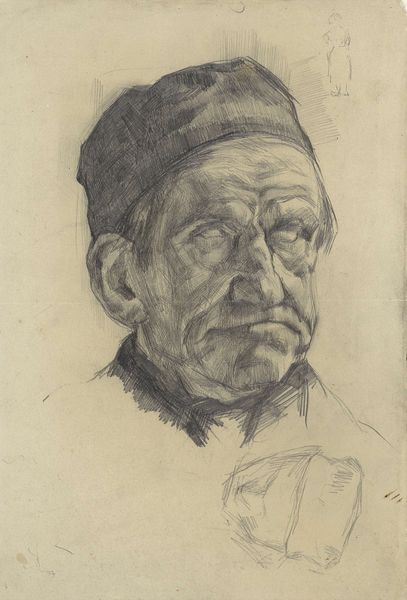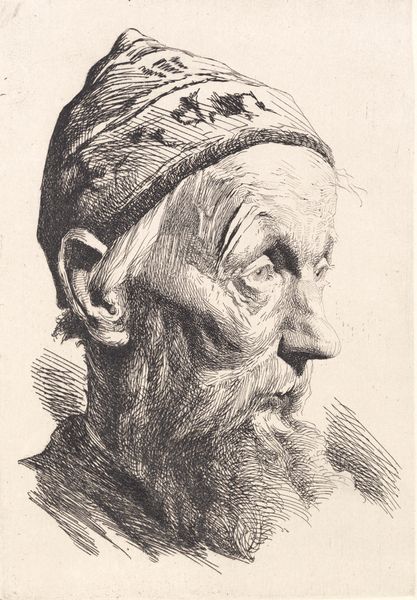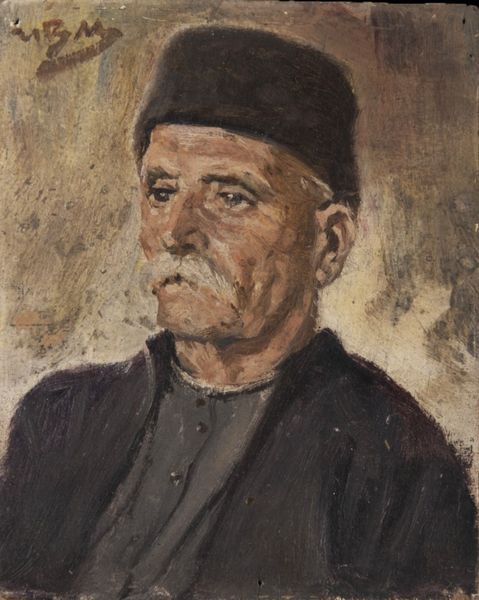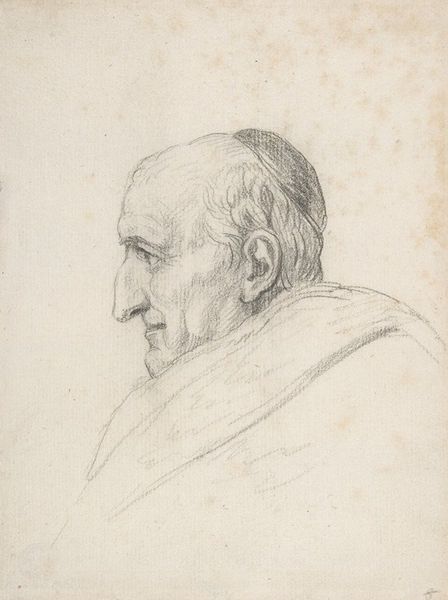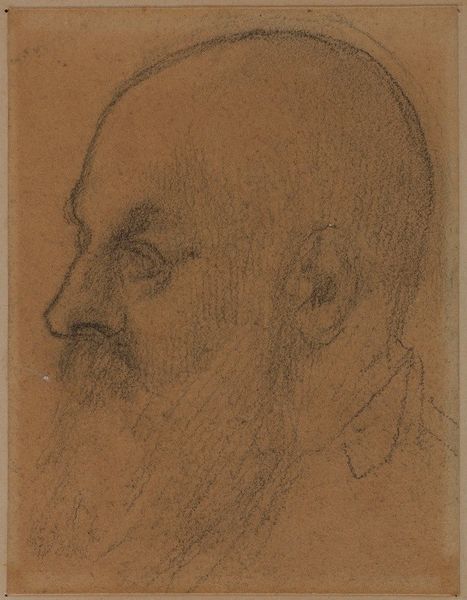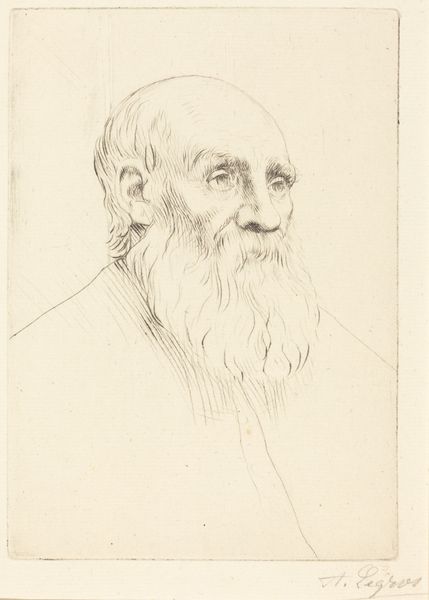
drawing
#
drawing
#
charcoal drawing
#
possibly oil pastel
#
oil painting
#
portrait reference
#
acrylic on canvas
#
underpainting
#
animal drawing portrait
#
portrait drawing
#
portrait art
#
digital portrait
Copyright: Public Domain: Artvee
Curator: Let's turn our attention to this compelling portrait by Franz von Lenbach, titled "Karl Eduard von Liphart," created around 1875. It seems to be primarily a charcoal drawing, perhaps with touches of pastel. Editor: The initial impression is one of gentle weariness, but with an underlying intelligence. I'm drawn to the economy of line – it feels both delicate and powerful. Curator: Indeed. Looking at the visible hatching and the relatively bare background, you get the sense that Lenbach was less interested in idealizing his sitter, and more so in quickly capturing likeness, perhaps preparatory for a larger painting. Note the directness and visible evidence of the artist's hand – each stroke building form. Editor: The hat he's wearing reads like a symbolic marker. In this muted green, it gives him the air of a scholar or possibly even a clergyman. Is that known, do we know what he did? There is definitely something quietly profound suggested by its somber tone and the way it anchors the composition. It also contrasts really effectively with the white of his hair. Curator: Records show Liphart was an art historian and collector, connected to the Hermitage Museum in Saint Petersburg, and he actually wrote a history of Western European forms of collecting. That head covering wasn’t ecclesiastical, but a zucchetto, something more associated with advisors and academics than outright religious symbols, although obviously stemming from one. The visible materials give an interesting feel – he looks aged and intellectual but captured with quick, energetic mark making. It almost betrays his supposed status. Editor: Interesting. That informs my reading completely. The zucchetto is almost a badge, placing him within a particular intellectual lineage. And the aging is certainly important – not idealized, not smoothed, the portrait invites contemplation on wisdom earned and time's passage. I also see something of the "everyman" about his face; his character resonates more than simply his social standing. Curator: Absolutely. The visible drawing process invites the viewer into that sense of aging and wisdom – less focused on the status he inhabited than how he came to inhabit it, and what it did to him. Editor: Yes, there is something deeply humanizing in how the drawing’s process becomes inseparable from the character portrayed. Curator: This portrait offers not just an image, but a glimpse into the construction of identity through labor, intellect, and the artistic process. Editor: A wonderful testament to how a portrait can resonate across both personal and cultural histories, with layers of symbolism for us to unlock and appreciate.
Comments
No comments
Be the first to comment and join the conversation on the ultimate creative platform.
